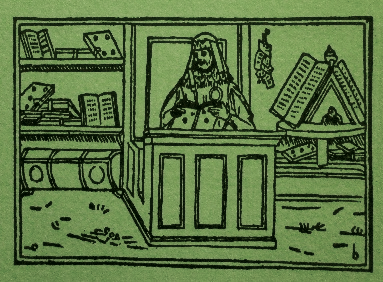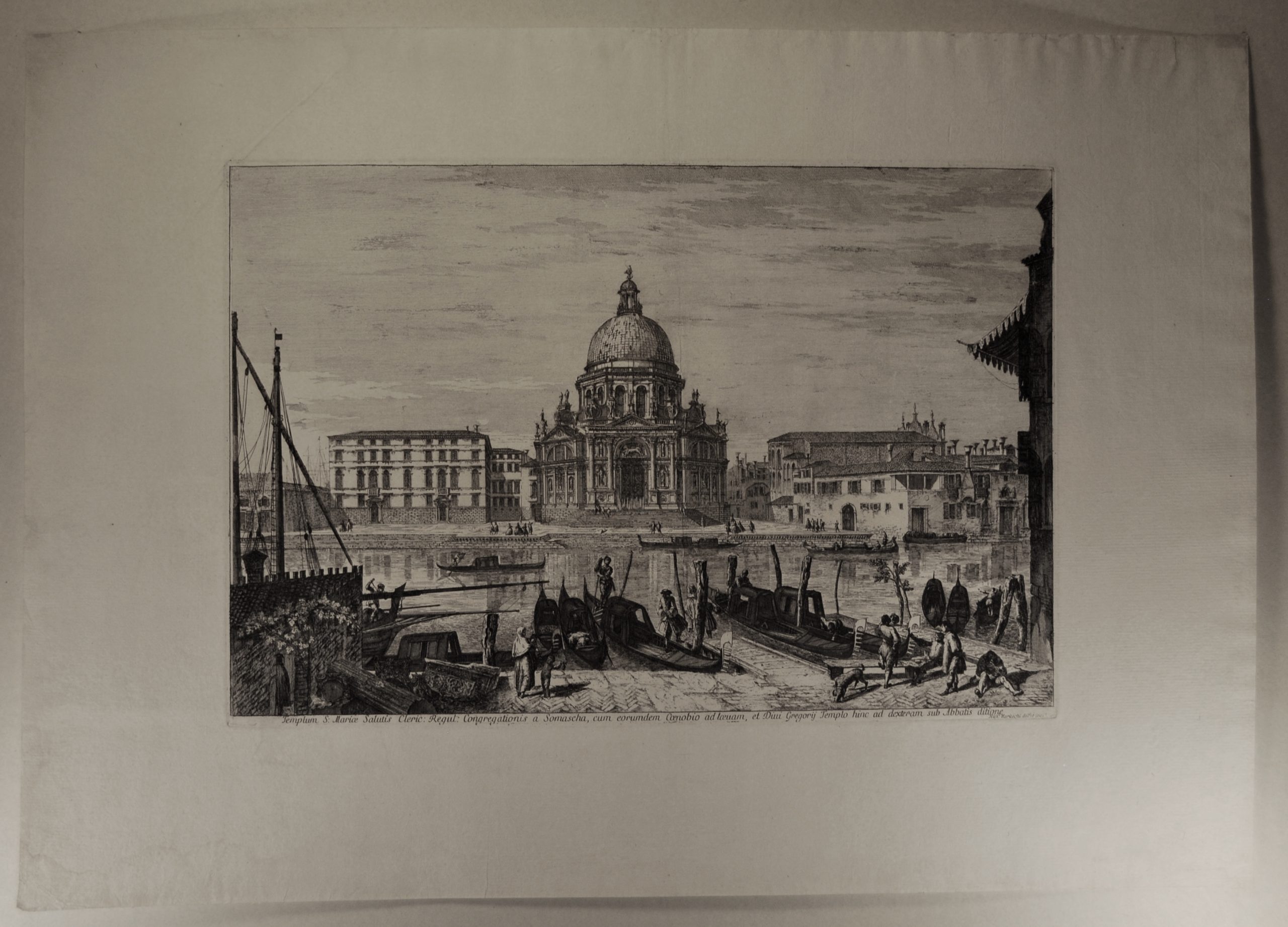Acquaforte di mm 310 x 420, su fglio di 430 x 495 mm.Vergata grossa. Filigrana FV con 2 stelle.. Vergata grossa. I/IV stato. Titolo centrato sul margine inferiore, Mich. Marieschi del.t et inci.t,senza numero. Provenienza: “Magnificentiores selectioresque urbis Venetiarum prospectus, quos olim Michael Marieschi venetus pictor, et architectus in plerisque tabulis depinxit … Vendutur in vico Sancti Lucae apud eundem Auctorem Venetijs 1741 (ma 1742). Succi “La Serenissima nello specchio di rame” : “La splendida acquaforte, databile al 1741-42, si colloca tra le ultime quattro incise da Marieschi per la maestria del taglio vedutistico perfettamente equilibrato tra gli episodi di vita quotidiana in primo piano e la visione panoramica dominata dal capolavoro di Baldassarre Longhena. L’incisione è in relazione con due stupende versioni dipinte: The Art Institute, Chicago; vendita Christie’s, Londra, 11 Aprile 1986, n.101”. Michele Marieschi (1710-1743) figlio di un mediocre pittore, studiò con passione architettura e si staccò presto dal padre. Tornato in patria dalla Germania nel 1735, dipinse belle vedute di Venezia. Nel 1741 (o 1742) diede alle stampe la raccolta di 21 acquaforti tratte dalle sue tele. Le incisioni di Marieschi rendono meglio delle sue pitture quel mondo scenografico e teatrale che la Venezia quotidiana offriva all’occhio dell’osservatore. Succi 1987, 5 I/IV, Montecuccoli degli Erri, Pedrocco 1999, 5 I/IV, Mary Pittaluga 1952, pag.35 e seg. ENGLISH Etching 310 x 420 mm, on a 430 x 495 mm sheet. PV filigree with 2 stars .. Coarse rod. I / IV state. Title centered on the lower margin, Mich. Marieschi del.t et inci.t, without number. Provenance: “Magnificentiores selectioresque urbis Venetiarum prospectus, quos olim Michael Marieschi venetus pictor, et architectus in plerisque tabulis depinxit … Vendutur in vico Sancti Lucae apud eundem Auctorem Venetijs 1741 (but 1742). Succi” The Serenissima in the copper mirror ” “The splendid etching, datable to 1741-42, ranks among the last four engraved by Marieschi for the mastery of the landscape cut perfectly balanced between the episodes of daily life in the foreground and the panoramic vision dominated by Baldassarre Longhena’s masterpiece. The engraving is related to two wonderful painted versions: The Art Institute, Chicago; Christie’s sale, London, 11 April 1986, n.101 “. Michele Marieschi (1710-1743), son of a mediocre painter, studied architecture with passion and soon broke away from his father. Returning home from Germany in 1735, he painted beautiful views of Venice. In 1741 (or 1742) he published the collection of 21 etchings taken from his canvases. Marieschi’s engravings make better than his paintings that scenographic and theatrical world that daily Venice offered to the eye of the observer. Succi 1987, 5 I / IV, Montecuccoli degli Erri, Pedrocco 1999, 5 I / IV, Mary Pittaluga 1952, page 35 et seq.
Libreria Emiliana
Antiquaria
Libri e Stampe Veneziane
dal XV al XXI Secolo
dal XV al XXI Secolo


